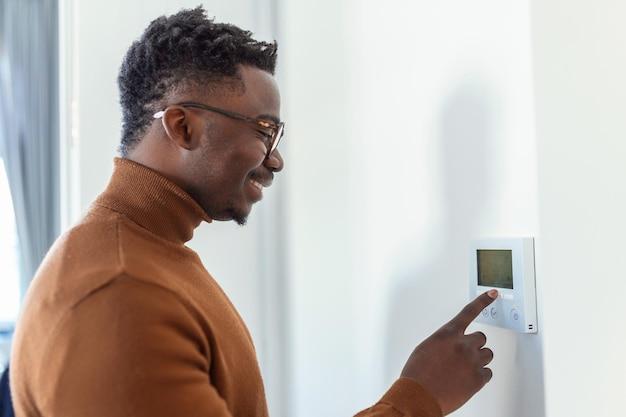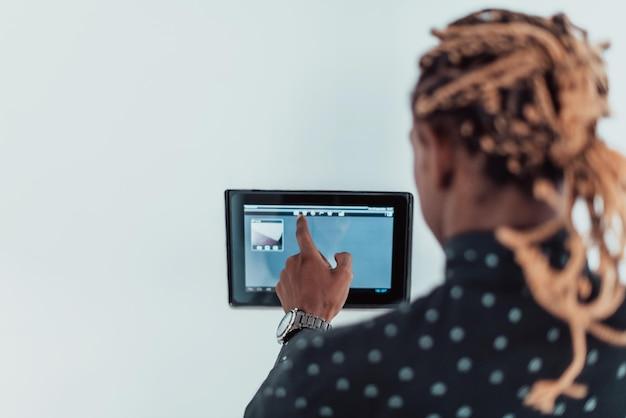Your home is your sanctuary, and the last thing you want is to feel unsafe in it. That’s why having a reliable security system in place is crucial. Not only does it give you peace of mind, but it also helps deter potential intruders from entering your home.
If you’ve recently moved into a house with an existing security system or have an inactive one, you might be wondering how to activate it. Maybe the system is outdated and needs a retrofit, or the control panel needs to be replaced. Alternatively, your system may not be working as it should, and you’re in dire need of a solution.
In this blog post, we’ll guide you through everything you need to know about activating your home security system. From understanding activation fees to taking advantage of reactivation offers, we’ll cover it all. Our goal is to equip you with the information you need to keep your home safe and secure. So let’s get started.
How to Activate Your Home Security System
Your home security system is an essential tool to protect your family and property. However, it’s only useful if it’s activated. In this section, we’ll guide you through the steps to activate the security system in your home.
Check Your Security System Status
Before you activate your security system, check its status. Your security system has different modes, such as armed or disarmed, stay mode, and away mode. Ensure your security system is in the mode you want to activate.
Arm Your Security System
To activate your security system, you need to arm it. To arm it, locate the control panel and enter the code to arm the security system. Different security systems have different ways of arming. Some systems require you to press a button on the control panel, while others require you to enter a code.
Use Your Mobile App
If you have a mobile app connected to your security system, you can activate your system remotely. Open the app, and select the option to arm your security system. Enter your credentials and confirm the action.
Know Your Security Company
Before you activate your security system, ensure you know the security company’s contact information. If your alarm triggers, you’ll receive a call from the security company to confirm if everything’s okay. If you don’t answer the call, they’ll dispatch security personnel to your home.
Activating your security system is a simple process that takes a few seconds. Ensure you check the system’s status, arm the system, use your mobile app, and know your security company’s contact information. These simple steps can give you peace of mind and help protect your family and property.
ADT Activation Fee: What You Need To Know
So you’ve decided to activate your ADT security system, but you’re curious about the activation fees. In this section, we’ll break down everything you need to know about ADT activation fees.
What is an ADT Activation Fee
An ADT activation fee is a one-time cost that ADT charges to activate and install your security system. This fee covers the installation and setup of your system and ensures that everything is working correctly. The activation fee is in addition to your monthly monitoring fee.
How Much is the ADT Activation Fee
The ADT activation fee varies depending on the package you choose and your location. Typically, the activation fee ranges from $99 to $199. However, some promotions can lower the activation fee, so it’s always a good idea to check with ADT to see if there are any current deals available.
What Does the ADT Activation Fee Cover
The activation fee covers the installation and setup of your security system, including placing the sensors and detectors and connecting them to ADT’s monitoring center. ADT also provides you with a yard sign and window stickers to let potential intruders know that your home is protected.
Is the ADT Activation Fee Worth It
While a one-time fee can be a significant investment, the ADT activation fee is worth it because it ensures that everything is correctly installed and functioning correctly. The activation fee also covers the cost of the yard sign and window stickers, which can help deter potential intruders from targeting your home.
In conclusion, the ADT activation fee is a one-time cost that covers the installation and setup of your security system. While the fee can vary depending on your package and location, it ensures that everything is working correctly. The activation fee is worth it as it helps deter potential intruders and provides peace of mind for you and your family.
Reactivating Your ADT Security System Offer
Are you one of the many homeowners who are currently not using their ADT security system? Has it been a while since you last used it? If your answer is yes, now might be the perfect time to reactivate it.
Why Reactivate Your ADT Security System
There are several reasons why it would be wise to reactivate your ADT security system. For one, it provides an added layer of protection for your home and family. In today’s world, it’s no secret that crime rates are increasing, and burglars are getting smarter.
Also, ADT provides state-of-the-art technology that can help keep your family safe from a variety of potential threats, such as intruders, fires, and carbon monoxide poisoning.
ADT Reactivation Offer
Reactivate your ADT equipment today and get a free home security system valued at $850. The offer includes a wireless keypad, motion sensor, and three door/window sensors. You’ll also get access to ADT’s 24/7 monitoring service that will notify you and the authorities in case of any emergency.
Additionally, the offer comes with an ADT Money-Back Service Guarantee. If you are not satisfied with the service within six months, ADT will refund the installation price and pay all monitoring fees.
How to Take Advantage of the ADT Reactivation Offer
Reactivate your ADT security system by visiting ADT’s website or by calling their customer service hotline. Once you provide your account details, ADT will schedule a technician to come and reactivate your system.
The installation process takes about an hour, and the technician will test the system to ensure everything is working correctly. Once the installation is complete, you’ll have access to ADT’s comprehensive security service.
Reactivate your ADT security system today, and take advantage of the exciting offer ADT has for you. The safety of your home and family should be a top priority, and ADT provides you with the peace of mind you need to know that your family is safe and secure at all times.
Retrofitting Your Security System
If you’re looking to increase your home’s security, but don’t want to shell out the money for a brand new system, retrofitting might be the answer. Retrofitting your security system means upgrading the components of your existing system to improve its functionality and performance.
Why Retrofit
Retrofitting your security system has several benefits. For starters, it can be more cost-effective than purchasing a whole new system. Additionally, retrofitting saves you time and effort as you won’t have to go through the process of replacing your entire system.
Components to Retrofit
When retrofitting your security system, you have a few options for components to upgrade:
1. Control Panel
Your control panel is the hub of your security system, and upgrading it can greatly improve your system’s overall functionality. Newer control panels often offer more advanced features like remote access, home automation integration, and more.
2. Sensors
Upgrading your sensors can improve the accuracy and responsiveness of your security system. Some newer sensors are also less prone to false alarms, making them a valuable addition.
3. Cameras
If you’re looking to improve your surveillance capabilities, upgrading your cameras is a good place to start. Newer cameras often offer higher resolution and better night vision, which can greatly improve the clarity of your footage.
4. Alarms
Upgrading your alarms can improve the audibility and effectiveness of your system. Newer alarms often have more advanced features like voice alerts and smartphone integration.
DIY or Professional Installation
When retrofitting your security system, you may be wondering whether to attempt the installation yourself or hire a professional. While DIY installation may save you money, it can be risky if you don’t have experience with electrical systems. Additionally, professional installation ensures that your system is properly configured and integrated with any other smart home devices you may have.
Retrofitting your security system can be a great way to improve your home’s security without breaking the bank. With a variety of components available for upgrade, there’s sure to be an option that fits your needs and budget. Whether you choose to install the components yourself or hire a professional, retrofitting can give you peace of mind knowing that your home is better protected.
Moving Into A House with an Alarm System
Moving into a new home can be an exciting experience, but it can also be quite overwhelming. One of the important things to consider when moving into a new home is its security. Many people invest in security systems to ensure their homes are safe and secure at all times. If you’re moving into a home with an alarm system, here are some things you need to know.
Get Familiar with the Alarm System
The first thing you need to do when you move into a house with an alarm system is to familiarize yourself with the system. Contact the security company that installed the system and ask for a thorough explanation of how it works. You should also get a copy of the user manual and keep it in a safe place. Learn how to arm and disarm the system, as well as how to change the passcode. This will help you avoid any false alarms or security breaches.
Update the Security System
If the previous owners of the house had an alarm system installed, it is important to update the system. Change the security code and make sure that all the entry codes for doors and windows are up to date. Also, check if there are any faulty sensors and have them replaced if necessary. This will ensure that the alarm system is fully functional and will work effectively in keeping your home secure.
Test the Alarm System
It is essential to test the alarm system when you move into a new home. Test all entry points, including doors, windows, and garage doors, to make sure that the sensors are working correctly. This will give you peace of mind knowing that your home is secure. You should also test the alarm system regularly, preferably once a month, to ensure that it is in good working condition.
Consider Upgrading the Security System
If the house’s alarm system is outdated, consider upgrading to a modern security system with advanced features. Modern security systems have smart home features that allow you to monitor and control your home’s security from a mobile device. They also come with motion sensors, video surveillance cameras, and other advanced features that improve the security of your home.
Moving into a new house with an alarm system may seem daunting, but by following these tips, you can ensure that your home is secure and protected. Remember that maintaining your home’s security is an ongoing process, so be sure to stay on top of things to keep your home safe and secure at all times.
Replace Your Security System Control Panel
Do you have an old and worn-out security system control panel that’s not as responsive as it used to be? Is it time to upgrade to a modern, efficient control panel that meets your security needs? You don’t have to worry about replacing the entire security system as you can replace just the control panel.
Reasons to Replace Your Security System Control Panel
Here are some compelling reasons why it’s time to get a new security system control panel:
Advanced Features
Modern security system control panels have advanced features that increase security and convenience. For example, they have a touch screen interface that makes it easy to control the system. Advanced features such as smart home integration, remote access, and customizable notifications are also available.
Better Security
Old security system control panels may have vulnerabilities that hackers can exploit. Modern control panels have improved encryption and security features to ensure that your home or business is protected from intruders and cyber threats.
Easy to Use
Older security system control panels can be complicated to use and program. Modern control panels have a user-friendly interface that simplifies programming and management. You can also use your smartphone or tablet to control and monitor your security system from anywhere.
Factors to Consider When Replacing Your Control Panel
When replacing your security system control panel, here are some factors to consider:
Compatibility
Before purchasing a new control panel, ensure that it’s compatible with your existing security system components.
Professional Installation
Replacing your security system control panel requires technical expertise. It’s best to hire a professional to install the new control panel to ensure that it’s done correctly.
Cost
The cost of replacing your security system control panel depends on the type of control panel you choose and any installation fees. Ensure that you get quotes from different providers to find the best deal.
In conclusion, upgrading your security system is a great way to ensure that your home or business is protected. Replacing your security system control panel is an excellent first step towards improving your security system’s performance, convenience, and reliability. Ensure to consider all factors beforehand to make the right decision.
Why Isn’t My Security System Working
Are you experiencing issues with your security system? Is it not functioning as it should? We understand that security systems are essential in keeping our homes and businesses secure. When they stop working, it can be frustrating and worrisome. This section aims to help you identify the reasons why your security system might not be working correctly.
Power Failure
One of the most common reasons why your security system may not be working is due to a power failure. Ensure that your system is plugged in and receiving a power supply. If you find that your security system is not receiving power, contact a qualified technician for assistance.
Dead Batteries
A common cause of malfunctioning security systems is dead batteries. If your system uses batteries, it’s possible that they have run out of power and need replacing. Try swapping out the old batteries with a fresh set and see if that fixes the problem.
Outdated Technology
If your security system is old, it’s possible that it’s no longer functioning correctly due to outdated technology. Consider upgrading to a newer, more modern security system with better technology to ensure your safety.
Faulty Wiring
Faulty wiring can cause your security system to stop working. Check for broken or frayed wires that may need repairing or replacing. If you’re not comfortable working with electrical wires, seek assistance from a professional.
Software Issues
If your security system uses software, make sure it’s up to date and properly configured. Outdated or incorrect software settings can cause malfunctioning systems. Consult your security system manual to learn how to properly configure your software.
False Alarms
Sometimes, a security system can appear to not be working because it’s producing false alarms. Check if anything in your environment is triggering your security system. If false alarms continue to occur, seek help from a professional.
In conclusion, there are various reasons why your security system might not be working. From power failures to software issues, it’s crucial to identify the source of the problem and fix it promptly. By following the tips outlined above, you can have peace of mind knowing your security system is functioning correctly.
Word Craze: Activating a Security System Made Easy
Are you puzzled by how to activate your security system? Fear not, for with these simple steps, you can easily activate your security system and have peace of mind knowing that your property is secure! Here’s how:
Arm Your Security System
The first step is to arm your security system. Check the user manual to see how to do it, but typically you can do this in one of two ways. You can either press the “Arm” button on the security system control panel or press the “Arm” button on the key fob. When you arm your system, it will activate all the sensors and detectors configured to protect your home or business.
Set a Code
Setting a code is important so that your security system can identify you as the authorized user. Choose a code that is easy to remember but difficult for others to guess. Your security system will prompt you to do this during the initial setup.
Test Your System
Before leaving the premises or going to bed, it’s vital to test your system to ensure that it’s working effectively. Test every sensor, detector, and camera to confirm that they are all working. If you find an issue, troubleshoot it before activating your security system.
Activate Your System
Once you have armed your security system and tested it, it’s time to activate it. This process varies depending on the type of security system you have, but it typically involves entering your code into the control pad or pressing a button on your key fob.
Activating your security system need not be a mind-numbing task. By following these easy steps, you can activate your security system, have peace of mind, and stay protected from any security threat. A secure home or business is a happy home or business!
My House is Wired for a Security System
If you’ve recently moved into a new home, or you’re deciding to upgrade your security system, you may be wondering if your house is already wired for a security system. Fortunately, many homes are already wired, and this can make installation of a new system easier and more affordable.
Identifying Wiring
The first step is to identify if your house is wired for a security system. Look for small, white plastic boxes on the walls around the house. These boxes are typically located near doors and windows, and they may have small wires coming out of them. These boxes are called “contacts,” and they are used to detect if a door or window is opened or closed.
Understanding the Wiring
If you find these contacts, then congratulations, your house is already wired for a security system! The next step is to understand how the wiring works. The wires connect the contacts to a control panel, which is typically located in a central location, such as the basement or garage.
Checking Compatibility
Before you install a new security system, it’s important to make sure that it’s compatible with your existing wiring. Many modern security systems use wireless technology that doesn’t require any wiring. However, if you prefer a wired system, check with the manufacturer to ensure compatibility.
Choosing a System
Once you’ve determined that your house is wired for a security system, it’s time to choose a system. There are many options available, from basic DIY systems to professional installations with 24/7 monitoring. It’s important to do your research to find a system that fits your needs and budget.
Having a wired security system in your home can provide peace of mind and help keep your family safe. If your house is already wired, you’re ahead of the game. Understanding your existing wiring, checking compatibility, and choosing the right system are all important steps to take to ensure a successful installation.
Activating System Protection via Command Prompt
If you’re looking to activate system protection via the command prompt, it’s a relatively straightforward process that can provide an added layer of security to your system. Here’s how to do it:
Step 1: Open Command Prompt
To open the command prompt, simply click on the Start Menu and type “cmd” into the search bar. From there, select “Command Prompt” from the search results.
Step 2: Run the Command
Once you have the command prompt open, simply type in the following command:
%systemroot%\system32\restore\rstrui.exe
This will open up the System Restore utility.
Step 3: Enable System Protection
In the System Restore utility, click on “Configure” and select “Turn on system protection.” From there, you can choose how much disk space to allocate for system protection.
Step 4: Create a Restore Point
Once you’ve enabled system protection, it’s a good idea to create a restore point. This allows you to roll back your system to a previous state in case of any issues. To do this, click on “Create” and give your restore point a name.
By activating system protection through the command prompt, you can ensure that your system has an added layer of security. It’s a simple process that can potentially save you a lot of headaches down the line.
How to Activate Your Existing Home Security System
If you’ve moved into a new home with an existing security system or have had one installed but don’t know how to activate it, don’t worry. Activating your home security system is easy and will give you peace of mind knowing your house is protected.
Contact Your Security Provider
The first thing you need to do is contact your security provider if you have not done so already. They will be able to guide you through the activation process and answer any questions you may have. They may also need to update the system’s firmware, so it’s essential to involve them in the activation process.
Enter Your Alarm Code
Once you’ve contacted your security provider, the next step is to enter your alarm code into the security panel. Your security provider should have given you a unique code when you signed up for the service. If you don’t have the code, contact your security provider, and they’ll give you one.
Test Your Security System
After you enter your alarm code, it’s time to test your system. It’s essential to test your system to make sure every sensor and component is working correctly. Your security provider will guide you through the testing process. After testing your system, you’ll be set up for 24/7 protection.
Set Up Notifications
Now that your security system is active, you can set up notifications to be sent to your phone or email if the alarm is triggered. This way, you’re always aware of what’s going on in your home, even when you’re away.
Activating your existing home security system is easy and will give you peace of mind knowing your house is protected. Contact your security provider, enter your alarm code, test your system, and set up notifications. With these few simple steps, you’ll be ready to take advantage of 24/7 security.



